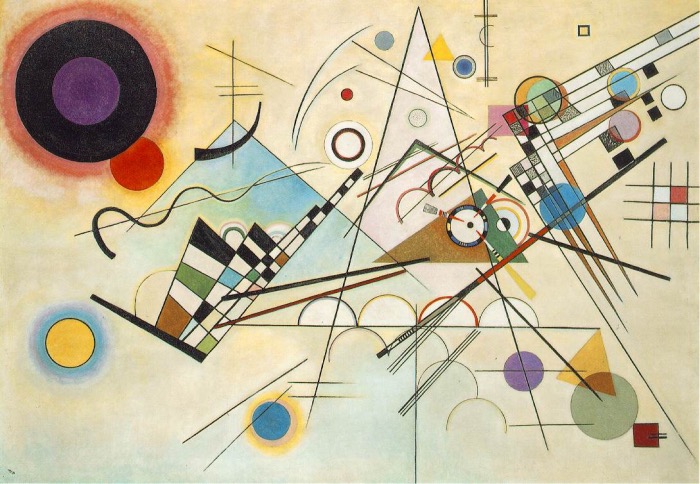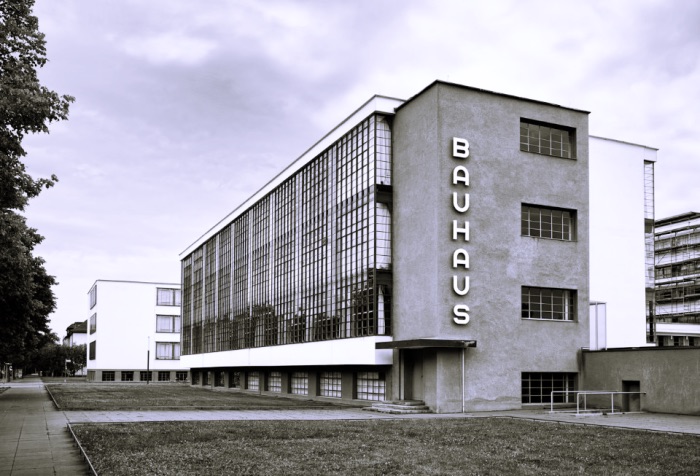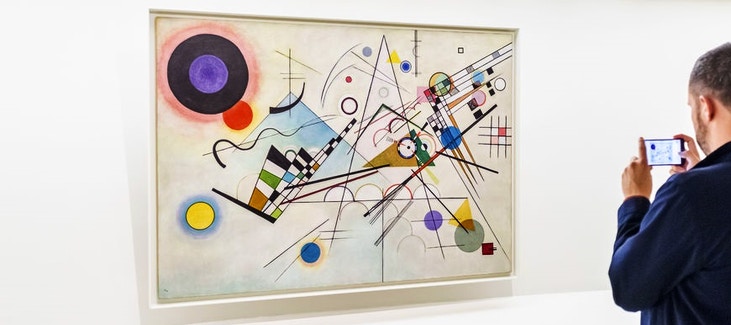
Composition 8 by Kandinsky
COMPOSITION 8 BY KANDINSKY: DESCRIPTION AND CURIOUS FACTS
The painting Composition 8 by Kandinsky is one of the masterpieces you can admire at the Guggenheim Museum of New York.
The artist painted the work in Weimar, while teaching at the Bauhaus.
In this post you’ll discover a painting describing the relationship of strength and movement that can exist between geometric shapes and pure colours.
Composition 8 by Kandinsky

Bauhaus
In 1922 Kandinsky was called to teach form theory and then painting at the Bauhaus in Weimar in the wall painting workshop of the famous institute founded by Walter Gropius in 1919.
DESCRIPTION OF COMPOSITION 8 BY KANDINSKY
Composition 8 by Kandinsky was painted in 1923 and reflects the teaching method of the artist, who trained his students to make some basic geometric shapes such as circles, squares and rectangles interact with primary colours.
Kandinsky uses white for the background and describes the relationship of strength and movement that exists between basic geometric shapes and pure colours. This way points, lines, curves, checkerboards, angles, triangles, grid patterns, circles and half-circles bring artistic creation back to its geometric essence.
Combination of geometric shapes and their combinations with colours were studied by Kandinsky in 1911, at the time of the publication of his book “On the Spiritual in Art”.
In that book Kandinsky writes:
It’s easy to notice that some colours are strengthened by some shapes and weakened by others. Anyway, bright colours become more intense if put inside acute shapes (for example yellow inside a triangle); the colours that love depth are intensified by round shapes (for example light blue by a circle).
CURIOUS FACTS ABOUT COMPOSITION 8 BY KANDINSKY
In Composition 8 by Kandinsky each line has a psychological meaning.
Triangle-shaped lines represent tension, horizontal lines calm, circular lines movement and so on.
Any reference to reality is absent in Composition 8 and colours are the true protagonists. This is the key work to understand Kandinsky’s art and also abstract art: there are no logical connections with what surround us, therefore spectators may have a completely personal and individual vision of the painting.

The painting at the Guggenheim Museum in New York

